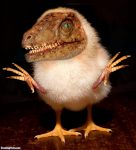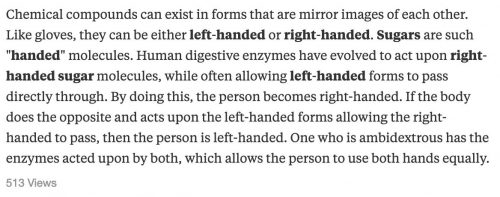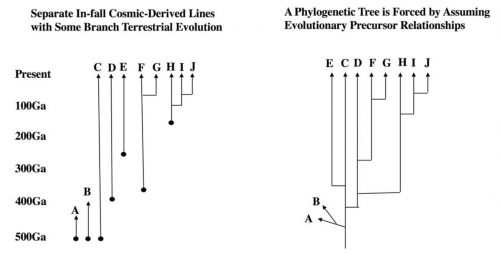Now this is high-quality click-bait: Near-Sighted Kids of Martian Colonists Could Find Sex With Earth-Humans Deadly. If only HG Wells had thought of that, his story would have had a more dramatic end as squinty-eyed Martian invaders dropped dead while trying to rape humans. The source for this peculiar claim isn’t that bad, but it’s still bad science. It’s about a guy who makes predictions about the future of human space colonists.
Solomon’s 2016 book, Future Humans: Inside the Science of Our Continuing Evolution, argues that evolution is still a force at play in modern humans. In an awe-inspiring TEDx talk in January 2018 — which inexplicably still has fewer than 1,000 views — Solomon outlined how humans would change — literally — after spending a generation or two living on Mars.
There’s the problem. These ideas are coming out of a TED talk, which is a good source for misinformation. I listened to it, and it was not awe-inspiring at all, but bad: it starts with the Elon-Muskian notion that the human race is doomed if we stay on Earth and we need to colonize other worlds. He lists a few ways we might go extinct, like a meteor strike, or erupting super-volcanoes, or using up all the resources on Earth. But he has a solution! One way to avoid such a fate would be to spread out beyond Earth, venturing out into the galaxy the way our ancestors spread from our birthplace in Africa.
I felt like raising my hand and mentioning that one and a quarter billion people still live in Africa, and that there are a lot of people who might wonder who you’re talking to with that “our ancestors” comment.
I’d also want to mention that changes occurring within two generations are going to be physiological adaptations, not evolutionary changes.
And galaxy
? Seriously? He’s talking about a pie-in-the-sky effort to colonize Mars, practically our neighbor yet still almost impossible to reach. If we’ve got our pick of the entire galaxy, surely there are better choices than a cold, arid rock that is uninhabitable by humans.
It gets worse from there.
It’s a weird talk. The first half is all about how awful life on Mars would be for our species: the greatly reduced gravity is going to lead to calcium depletion and brittle bones, and much greater complications in pregnancy. The radiation is going to be a severe, even lethal problem — he points out that a native of Mars would receive 5,000 times the radiation dose of an inhabitant of Earth. Babies born on Mars will bear thousands of times more mutations than Earth babies, so miscarriages will be far more common.
You may be thinking that this sounds like a hell-hole, that the tiny population of humans who make it to Mars will be rapidly eliminated by fierce attrition, and that any colony will be far more doomed than anyone remaining on Earth. Not to this guy! He makes some very positive predictions about what will happen to this remote colony.
Far from waiting thousands of years to witness minuscule changes, Solomon instead believes that humans going to Mars could be on the verge of an evolutionary rollercoaster. He expects, among other things, that their bones will be stronger, their sight shorter, and that they’ll, at some point, have to stop having sex with Earth-humans.
But how? Solomon has an almost religious faith in the power of natural selection. Sure, there’ll be lots more mutations, but that just means evolutionary changes that might require thousands of years on Earth will occur in a few generations on Mars. He sort of sails over the fact that his hypothesis bypasses any opportunity for natural selection to work. He’s relying entirely on wishful thinking, that because brittle bones are a problem, a spontaneous mutation that counters it will arise, and rapidly spread through the colony…in a couple of generations. He doesn’t seem to be aware of the cost of selection. You’ve already got a tiny population, and you’re proposing that rare mutations will displace the majority of the individuals in a few generations? What kind of genetic load is he predicting? What is the effective population size of your colony?
“Evolution is faster or slower depending on how much of an advantage there is to having a certain mutation,” Solomon says. “If a mutation pops up for people living on Mars, and it gives them a 50-percent survival advantage, that’s a huge advantage, right? And that means that those individuals are going to be passing those genes on at a much higher rate than they otherwise would have.”
So we’re expecting an extremely rare advantageous mutation with extremely high adaptive value to “pop up” in a colony, while ignoring the greater likelihood of lethal or sterilizing mutations. We’ve got predictable increases in short-term adapations, like rising near-sightedness rates from living in close spaces, but we’ll pretend the predictable increases in cancer rates are negligible. Further, this population undergoing constant, rapid die-off with a few very rare benign mutations will, among other things, lose immune responses due to living in a sterile environment, which is how they’ll lose the ability to have sex with, or even contact with filthy Earth-humans, preventing the possibility of replacement of losses with new immigrants.
But cool, they might evolve new skin tones to cope with the radiation, because turning orange with more carotenes in your skin will be sufficiently protective to compensate for all the other damages.
He’s at least vaguely aware that they’re going to need a large, rich source of human genetic diversity to get all this “evolution” going.
It also means Musk and others will need to consider genetic diversity, to ensure a good mix throughout the population. Solomon argues for around 100,000 people migrating to Mars over the course of a few years, with the majority from Africa, as that is where humans see the greatest genetic diversity.
“If I were designing a human colony on Mars, I would want a population that would be hundreds of thousands of people, with representatives of every human population here on Earth,” Solomon says.
OK, how? At least this is a good example of a biologist telling physicists to do the impossible, rather than vice versa, but I’m just thinking this is silly. The resources required to ship hundreds of thousands of people to a place where the majority are going to die and fail might be better spent improving the sustainability of life on Earth. At least he did early on acknowledge that resource depletion might be a factor that would limit survivability, it just wasn’t clear that he wanted to engineer a situation to make his prophecy come true.
Finally, the fact that his solution relies entirely on unpredictable, chance mutations occurring so rapidly that natural selection has no time to work means that his fundamental premise, that he can make predictions about the fate of human colonies on other worlds, is absolute rubbish.
I don’t mind a little optimism, but it’s the internal contradictions and neglect of basic facts that gets to me.







